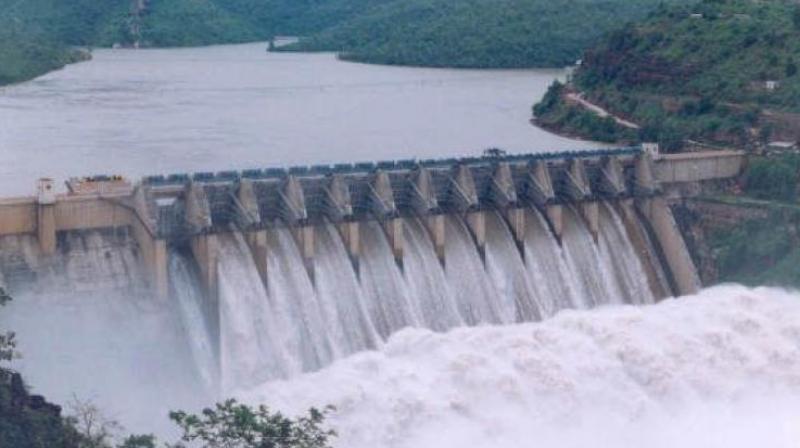NDSA Awaits Telangana Report on KLIS Flood Protection

Hyderabad: The National Dam Safety Authority (NDSA) is yet to receive any report from the state irrigation department on implementation of the interim monsoon flood protection measures that it had suggested for the safety of the Kaleshwaram project barrages. Unless this report is submitted by the state government, there is little that the NDSA can do to finalise its own report suggesting possible solutions, or measures, to protect the Kaleshwaram barrages, according to a deposition before the Justice Pinaki Chandra Ghose-led commission of inquiry into the alleged irregularities with respect to planning, execution and construction of the barrages.
However, there is more than that meets the eye on this issue, it is learnt. While the decision-making process in the state may have taken time, independent research labs owned by the Union Jal Shakti Ministry could have helped get the task done a bit more quickly had at least one of them not insisted on upfront payment, according to sources.
It was pointed out before the commission on Tuesday that the NDSA sent one letter on May 13 and another on June 25, seeking implementation reports from the state government, but that no response was received. Unless these reports are in place, the NDSA would be hamstrung to prepare its final report, pointed out Jal Shakti ministry adviser Sriram Vedire, who made a presentation before the commission on various aspects of the Kaleshwaram project, and its barrages.
A committee formed by the NDSA had given an interim report on April 30, in which it called for geo-technical and geo-physical investigations at the barrages that were to be completed before the onset of monsoon. The measures taken by the state were delayed by a month and a half, which made it difficult to complete the tests and investigations in time, according to the presentation.
One of the reasons for asking for these tests was because they were not conducted as extensively as they should have been before the construction of the barrages began.
According to sources, decisions were still being taken on the labs that were to conduct the tests. While the NGRI said it would not be able to take up the job, the government finalised the Pune-based Central Water & Power Research Station (CWPRS), and Delhi-based Central Soil & Materials Research Station (CSMRS) for the tests after a high-powered review by the state government on May 18.
Sources said that CWPRS, owned by the Jal Shakti ministry, had made it clear that unless the required fee was paid it would not be able to start the work. The CSPRS began work and then sought payment.
The CWPRS was tasked to do the tests at Sundilla and Annaram, and the CSMRS was given the job at Medigadda. The labs were informed on May 20 about the government decision on handing the work for them. “So the question of providing a response to the May 13 letter from NDSA is moot under these circumstance,” sources said.
With respect to the second reminder, the sources said the irrigation department was caught up in getting the basic protection measures completed, including lifting of the gates, cutting one of the gates at Medigadda, ensuring that the upstream and downstream apron work as recommended by the NDSA were completed.
On July 12, the circumstances were explained to NDSA representatives at a meeting at Jalasoudha, the irrigation department headquarters. It was also taken to the NDSA’s notice that bringing up ‘undisturbed’ core samples from the river bed was proving to be impossible as the sand columns in the cores were collapsing, and water seepage was being encountered as the drilling was being performed, the sources said.
